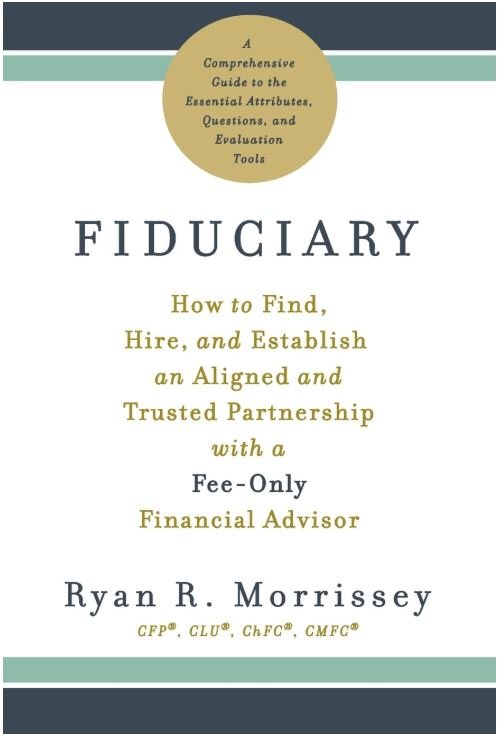AI Stocks, Interest Rates, and Market Trends with Michael Collins
This week I'm joined by Michael Collins who is the CEO of WINCAP Financial and RIA, located in Boston, MA. He's a chartered financial analyst and he also teaches finance courses at Endicott College and Bunker Hill College.
Micheal and I will touch on a handful of current topics today wtih an aim to shed light on different perspectives pertaining to all the recent news in the market.
A CLOSER LOOK AT NVIDIA AND OPENAI
On January 28th, a Chinese company had unveiled open-source AI technology. While the details are still a bit unclear, the market’s reaction, particularly regarding NVIDIA, was hard to ignore.
When new technology emerges, it’s really tough to predict where it will go. This situation with AI feels similar to when cryptocurrency, Bitcoin, and blockchain first hit the scene. There’s a lot of uncertainty surrounding it, and it can make investors nervous and can make these kinds of investments tricky.
Another thing on my mind is the valuation of companies like NVIDIA. When a company is trading at 25 times sales (like NVIDIA is right now), even the smallest bit of bad news can cause a pretty significant drop.
Combined with the history of chip companies, which have always been cyclical. A sudden shift in sentiment could lead to big corrections.
ARE AI INVESTMENTS WORTH IT?
What really stands out to me is whether all this money pouring into AI is really paying off.
For businesses, AI has certainly been a game changer. It can be used daily for writing articles or simplifying workflows. I’ve seen firsthand how powerful it can be. But the bigger issue is whether AI will truly drive long-term profitability and growth for companies. Determing that will be a process and it’s something we’ll have to watch closely as the tech continues to develop.
THE COST OF AI
It is hard to ignore the cost of AI. I saw some headlines recently about DeepSeek hitting number one in the Apple Store, which shows how much interest there is in AI-driven tools.
However, I do wonder—can companies afford to implement these technologies at scale? As businesses continue to invest heavily in AI, I think it’s crucial to weigh the benefits against the costs.
SHOULD WE BE BUYING NVIDIA?
It's no surprise that everyone’s curious about this. However, what a lot of people don’t know is that if you’re already investing in the S&P 500, you’re probably already holding a significant chunk of NVIDIA. Roughly 7% of the S&P 500 is tied up in NVIDIA—so, if you’re just investing in the broader market, you’re likely already exposed to the company in a major way.
I guess that leads us to the big question is: What’s next for AI, and how will companies like NVIDIA keep pushing the envelope? Only time will tell in this case. But one thing’s for sure: The intersection of technology, data, and investment is something we’ll all be navigating for years to come.
FEDERAL RESERVE OUTLOOK
Now, let’s shift gears and talk about the Federal Reserve, because their actions in 2025 will continue to be pivotal.
There’s not likely to be any major moves in terms of interest rates at the moment. Instead, the conversation will likely revolve around their strategy and outlook for the year.
The good news is that we’ve been getting some positive economic data—decent job numbers and inflation coming in lower than expected. However, as we know, the Fed is highly data-dependent. So, any decision they make will be based on the numbers they have at hand, so things are still susceptible to change.
HOUSING MARKET OUTLOOK
One area of concern, is housing. Housing inflation is one of the trickiest areas when it comes to controlling overall inflation. It’s easy to see why: High interest rates tend to drive up rental prices because landlords know that with borrowing costs at 7%, people are less likely to buy, creating more demand for rental units. In fact, this is one of the reasons we’ve seen rent prices skyrocket in the last few years.
But could lowering interest rates help ease this pressure? It’s possible. Lowering rates could bring down mortgage rates, which would help cool the housing market and give some relief to renters.
Unfortunately, that hasn’t exactly happened yet. It’s been a little puzzling, actually. You’d expect mortgage rates to be dipping below 6% given where the federal funds rate and the 10-year Treasury bond are right now.
Instead, the bond market is signaling uncertainty, and the spread between mortgage rates and treasury yields is at a historic high. The bond market seems to think that rates might stay higher for longer, even as the Fed moves toward a more neutral stance.
So, as we move into 2025, the Fed’s decisions will be a game-changer, especially for investors and people trying to navigate the housing market.
What’s also influencing the market is the lack of available mortgages, especially after many left the industry post-refi boom. This shrinking supply impacts the overall market, but it’s not something the Federal Reserve can directly control.
While the Fed can influence short-term rates, they have limited power over long-term mortgage rates. Ultimately, housing costs may remain high until there’s more clarity on future policies and how they will impact inflation and the broader economy.
AN INTERESTING DEVELOPMENT TO KEEP AN EYE ON
The next decade presents a shift in demographics. As baby boomers pass away, a large portion of the housing stock will transfer to a smaller generation, leading to a potential oversupply. In areas like Florida and the Carolinas, where prices surged over the last few years, there’s a possibility that demand will lessen, and those second homes may become less desirable.
STOCK MARKET OUTLOOK
Shifting focus to large-cap growth stocks, there's been a clear outperformance over the last decade compared to small caps, with large-cap returns far surpassing smaller companies.
Yet, there’s speculation that small-cap stocks might see a resurgence. Historically, small value stocks tend to outperform over the long term, but this hasn’t been the case recently. In an ideal scenario, large-cap stocks would plateau while smaller companies catch up.
SMALL, MID, OR LARGE CAP
Currently, large-cap stocks, especially mega-caps, appear overpriced—trading at a much higher P/E ratio compared to small-caps, which look relatively cheap. Mid-caps may provide a sweet spot in this environment, offering a balance between size and growth potential.
The recent broadening of the bull market, where software stocks like Salesforce and Palo Alto surged, signals this shift. With valuations on the high end for large-caps, the attention is moving to mid-caps and software, as investors seek the next growth leg.
In terms of small-cap exposure, investors have different options like the Russell 2000 or S&P 600.
While both indices have their merits, the S&P 600 is favored for containing more profitable companies, while the Russell 2000 often includes less stable firms, which could mean riskier plays in a small-cap rally. Small-cap stocks often come with more volatility and lower quality, so a selective approach is crucial.
A potential shift in interest rates could influence the market as well. The Federal Reserve has plenty of room to make rapid cuts if necessary, with ample dry powder left in case of a downturn, much like the post-GFC period.
BITCOIN RESERVE
Lastly, there’s concern over proposals like a Bitcoin reserve for the U.S. government. While some might view it as a step toward adopting digital currencies, it could be risky. The volatility of Bitcoin, combined with an already substantial national deficit, makes it an ill-advised move for the government.
There’s also irony in Bitcoin advocates, who promote banking independence, seeking validation through government purchases of the asset. As for Bitcoin’s future, its mysterious origins and volatility make it a questionable investment, especially for those nearing retirement.
In summary, 2025 is shaping up to be a year of transitions in markets—small caps could make a comeback, large-cap stocks may face corrections, and tech could pivot toward software. Meanwhile, any government involvement in speculative assets like Bitcoin should be approached with caution.
If you have a question or topic that you’d like to have considered for a future episode/blog post, you can request it by going to www.retirewithryan.com and clicking on ask a question.
As always, have a great day, a better week, and I look forward to talking with you on the next blog post, podcast, YouTube video, or wherever we have the pleasure of connecting!
Written by Ryan Morrissey
Founder & CEO of Morrissey Wealth Management
Host of the Retire with Ryan Podcast






